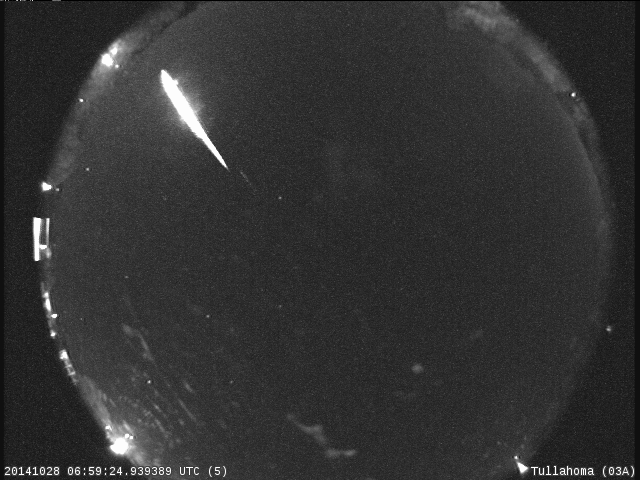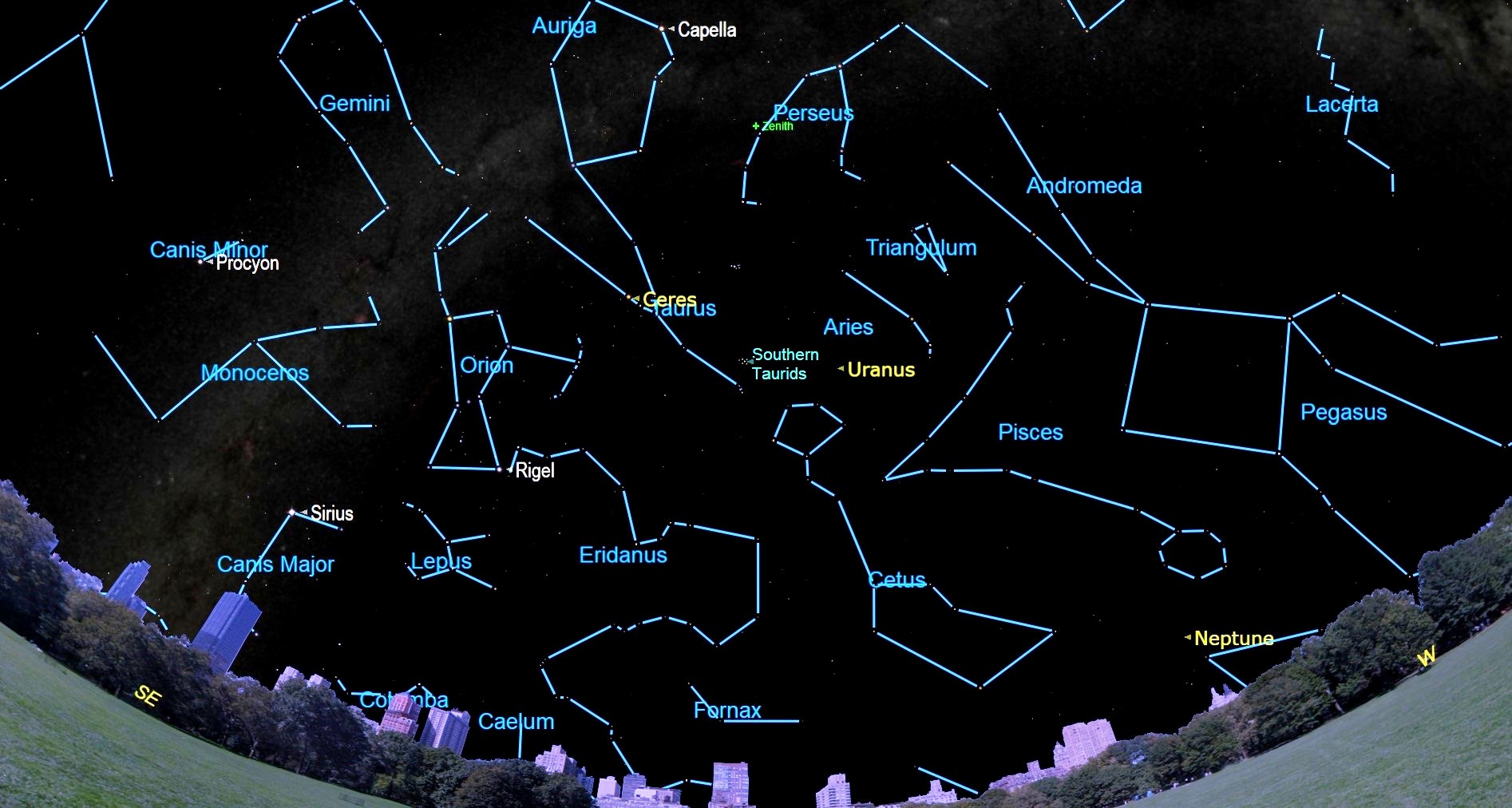The Taurid meteor shower of 2021 is peaking now. Here's what to expect.

For the next week or so, if you happen to be outside during the overnight hours and happen to catch a glimpse of a bright "shooting star" with a yellow-orange or ruddy hue you might very well have just caught sight of a Taurid meteor.
The annual Taurid meteor shower shows up like clockwork every year between mid-October and mid-November, but Nov. 5 through Nov. 12 will be the best time to look for them when they reach a broad maximum.
The moon will not be a problem when hunting for these meteors. On Nov. 5, it will be a slender crescent that will set at around 6:30 p.m. local time. Each night, the moon will get a little wider and a little brighter and sets about an hour later. But even by the evening of Nov. 12 when the phase of the moon has grown to just a day past first quarter ("half phase"), it will set around 12:50 a.m., leaving the rest of the night dark for meteor viewing.
Related: The best meteor showers of 2021
If you're hoping to snap a photo of a Taurid meteor, check out our tips on how to photograph meteors and meteor showers. If you need cameras or other equipment, our best cameras for astrophotography and best lenses for astrophotography offer an overview on what to consider.
Bright, but sluggish streaks
If you take a photograph of the 2021 Taurid meteor shower, send images and comments in to spacephotos@space.com.
Under clear, dark skies, some 10 to 15 Taurids may appear per hour. They are often yellowish-orange and, as meteors go, appear to move rather slowly. Their name comes from the way they seem to radiate from the constellation Taurus, the Bull, which sits low in the east a couple of hours after sundown and is almost directly overhead by around 1:30 a.m. local time. So, as you can see, even as late as Nov. 12, the bright moon will have departed the scene just as Taurus is reaching its highest point in the sky.
Meteors — popularly referred to as "shooting stars" — are generated when debris enters and burns up in Earth’s atmosphere. In the case of the Taurids, they are attributed to debris left behind by periodic Comet Encke, which last passed through the inner solar system in June 2020 and expected to return in October of 2023. The Taurid debris stream also contains noticeably larger fragments than those shed by other comets, which is why this rather elderly meteor stream occasionally delivers a few unusually bright meteors known as "fireballs."
Breaking space news, the latest updates on rocket launches, skywatching events and more!
Two meteor streams for the price of one
The Taurids are actually divided into the Northern Taurids and the Southern Taurids. This is an example of what happens to a meteor stream when it grows old.
Even at the beginning, the particles could not have been moving in exactly the same orbit as their parent comet; their slight divergence accumulates with time. In the meantime, the sun is not the only body gravitationally controlling the particles' orbits; the planets are having subtle effects on the stream. As the positions of the planets are constantly changing, the particles pass nearer to them on some revolutions than others — diverting parts of the stream, fanning it out and splitting it.
So, what was originally one stream diffuses into a cloud of minor streams and isolated particles in individual orbits, crossing Earth's orbit at yet more widely scattered times of the year and coming from more scattered directions until they are entirely stirred into the general haze of dust in the solar system.
According to Margaret Campbell-Brown and Peter Brown, in the 2021 edition of the Observer's Handbook of the Royal Astronomical Society of Canada, the Southern Taurids reach maximum on Nov. 5 and the Northern Taurids reach their peak a week later on Nov. 12. The two radiants lie just south of the Pleiades, or the Seven Sisters star cluster.
So, during the next week, if you see a bright, slightly tinted orange meteor sliding rather lazily away from that famous little smudge of stars, you can feel sure it is a Taurid; a piece of Encke's comet.
Joe Rao serves as an instructor and guest lecturer at New York's Hayden Planetarium. He writes about astronomy for Natural History magazine, the Farmers' Almanac and other publications. Follow us on Twitter @Spacedotcom and on Facebook

Joe Rao is Space.com's skywatching columnist, as well as a veteran meteorologist and eclipse chaser who also serves as an instructor and guest lecturer at New York's Hayden Planetarium. He writes about astronomy for Natural History magazine, Sky & Telescope and other publications. Joe is an 8-time Emmy-nominated meteorologist who served the Putnam Valley region of New York for over 21 years. You can find him on Twitter and YouTube tracking lunar and solar eclipses, meteor showers and more. To find out Joe's latest project, visit him on Twitter.


